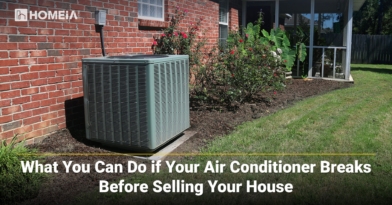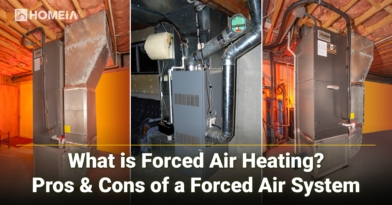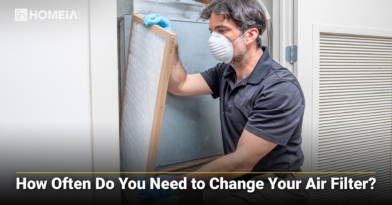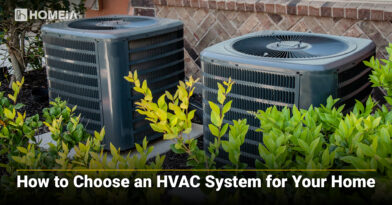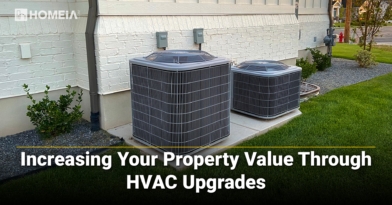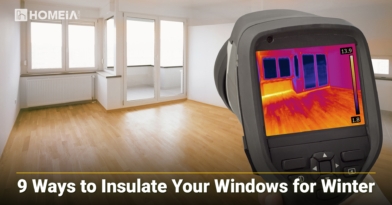The Process of Furnace installations in the San Jose, California
- Author:by The HOMEiA Team
- Category: Home Improvement

A furnace is an essential utility system used for heating homes and businesses. Depending on where you might be located throughout the United States, there are different things to keep in mind.
A furnace system should be chosen with consideration to the region’s climate conditions to provide the most comfort for people living and working in these buildings. Installing a furnace is a process that involves several critical steps, and each contributes to the overall efficiency and safety of the system.
The city of San Jose, in California, with a Mediterranean climate of mild, wet winters and warm, dry summers, is one of these areas where heating is necessary for comfort during the winter. Homes and businesses located in this region typically utilize a furnace to heat buildings during the cooler winter months.
This article details the process of furnace installations in the San Jose microclimate, including how to find the best furnace installer, factors to consider if you want to DIY your furnace installation, and the indicators that let you know that your furnace needs replacing.
Let’s get into the details about keeping warm with a properly installed furnace system!
Table of Contents:
- 1. What is a Furnace, and What does it do?
- 2. How Do You Know That Your Furnace Needs to be Replaced?
- 3. Can You install a Furnace as a DIY?
- 4. How Do You Hire The Best Furnace Installer?
- 5. Are There Specific HVAC Installation Recommendations for The San Jose California Area?
- 6. How Do You Install a New Furnace?
- Conclusion
1. What is a Furnace, and What does it do?

A furnace is specifically designed for heating. It works by heating air, which is then distributed throughout the home, typically via a system of ducts and vents. Furnaces utilize various fuel sources like natural gas, propane, oil, or electricity to generate heat.
For cooling, a separate system is typically used, known as an air conditioner. Air conditioners remove heat and humidity from the inside of the home, transferring it outside, thereby cooling the interior.
However, in some HVAC (Heating, Ventilation, and Air Conditioning) systems, a furnace and an air conditioner can be integrated into one system. In these setups, the furnace provides heat in the winter, while the air conditioner provides cooling in the summer, with both sharing components like the air handler and ductwork to circulate air throughout the home.
What You Can Do if Your Air Conditioner Breaks Before Selling Your House
Homebuyers expect to step into a perfectly temperature-controlled environment and be able to trust that the existing HVAC will continue to work for a while. So, if your A/C is not functioning when selling your house; here’re a few solutions that could help you sell your home quickly…
2. How Do You Know That Your Furnace Needs to be Replaced?
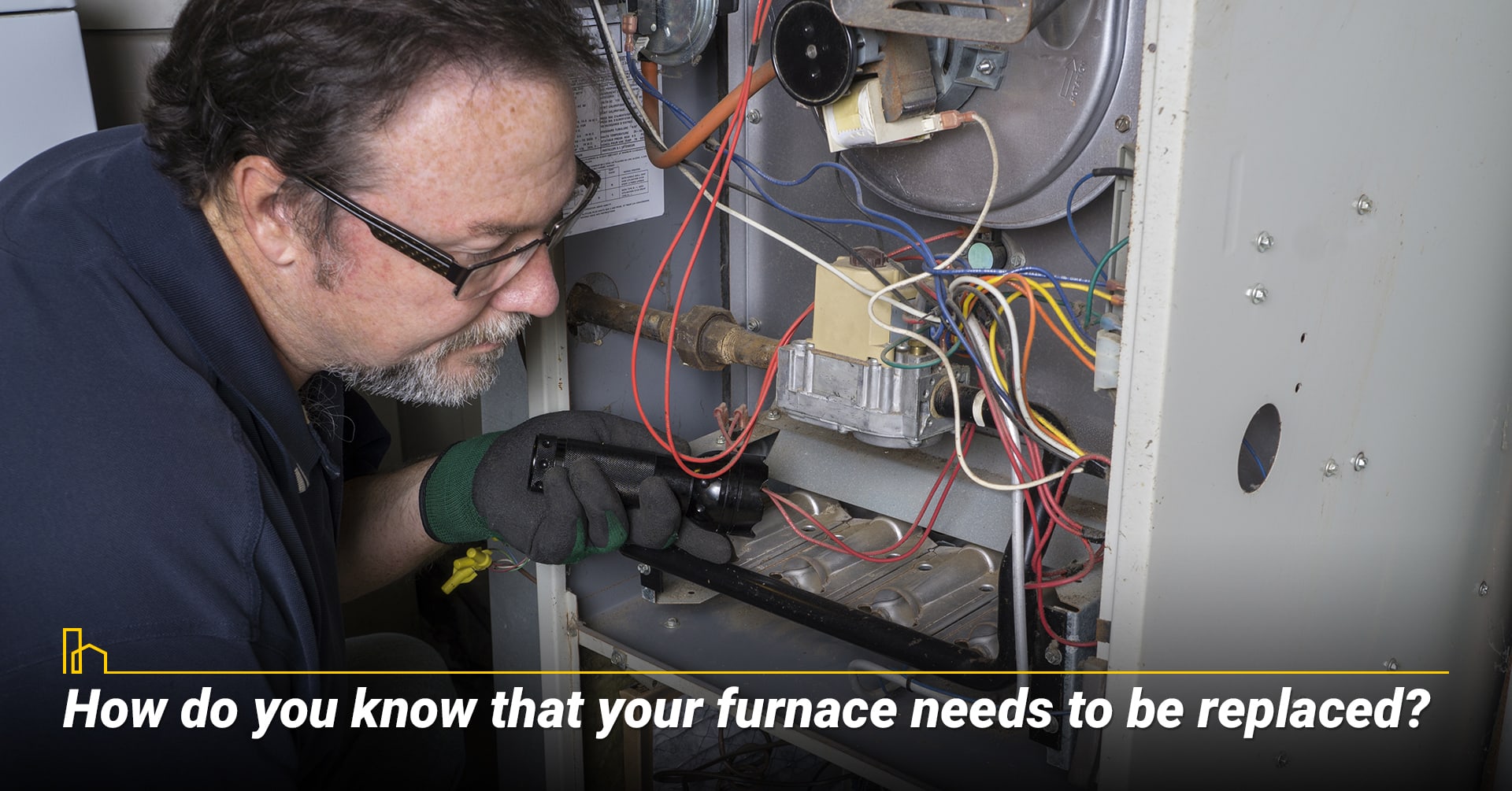
Replacing a furnace can be a costly process, so you wouldn’t want to replace it before it needs to be done, but you also don’t want to go without heat when an aging furnace can’t keep up with heating needs!
Knowing when your furnace needs to be replaced involves paying attention to several key indicators:
- A. Age of the Furnace: The average lifespan of a furnace is about 15-20 years. If your furnace is nearing or has surpassed this age range, it may be time for a replacement, especially if you encounter frequent breakdowns or efficiency issues.
- B. Increasing Repair Frequency and Costs: If you’re finding that your furnace requires frequent repairs, and these repairs are becoming increasingly expensive, it might be more cost-effective to invest in a new system.
- C. Rising Energy Bills: An old or inefficient furnace must work harder to heat your home, leading to higher energy bills. A significant and consistent increase in heating costs can indicate that your furnace is losing efficiency.
- D. Inconsistent Heating: If some rooms are too hot while others are too cold, or if you’re experiencing poor heating performance, your furnace may not distribute air properly throughout your home.
- E. Unusual Noises: Banging, popping, rattling, or squealing noises from your furnace can indicate mechanical problems, airflow reductions, or a clogged burner.
- F. Visible Signs of Wear and Tear: Rust, cracks, or corrosion on the furnace or its components can be signs that it’s time for a replacement.
- G. Carbon Monoxide Presence: If your carbon monoxide detector goes off or if you notice symptoms of exposure (like headache, nausea, burning sensation in the eyes), this is a serious sign that your furnace may have a dangerous leak or a combustion problem.
- H. Persistent Dust and Dry Air: Older furnaces often fail to moisturize and clean the air in your home, leading to dusty, dry indoor air. If you notice increased dust or suffer from dry skin or respiratory issues, your furnace may not be functioning correctly.
- I. Yellow Flame Instead of Blue: The burner flame of your furnace should be blue. If it’s yellow, it could indicate the presence of carbon monoxide, a dangerous gas.
If you notice any of these key indicators, it’s time to have a professional HVAC technician inspect your furnace. A furnace tech can definitively assess the system’s condition and guide you on whether repair or replacement would be the best course of action.
What is Forced Air Heating? Pros & Cons of a Forced Air System
Forced air heating systems are the most popular home heating systems in North America. But how do they work? And are they right for all homeowners, or are there other options? Here we’ll explore how a forced air system works and take a look at its Pros and Cons. Then we’ll introduce a few alternatives that may work for certain homeowners…
3. Can You install a Furnace as a DIY?
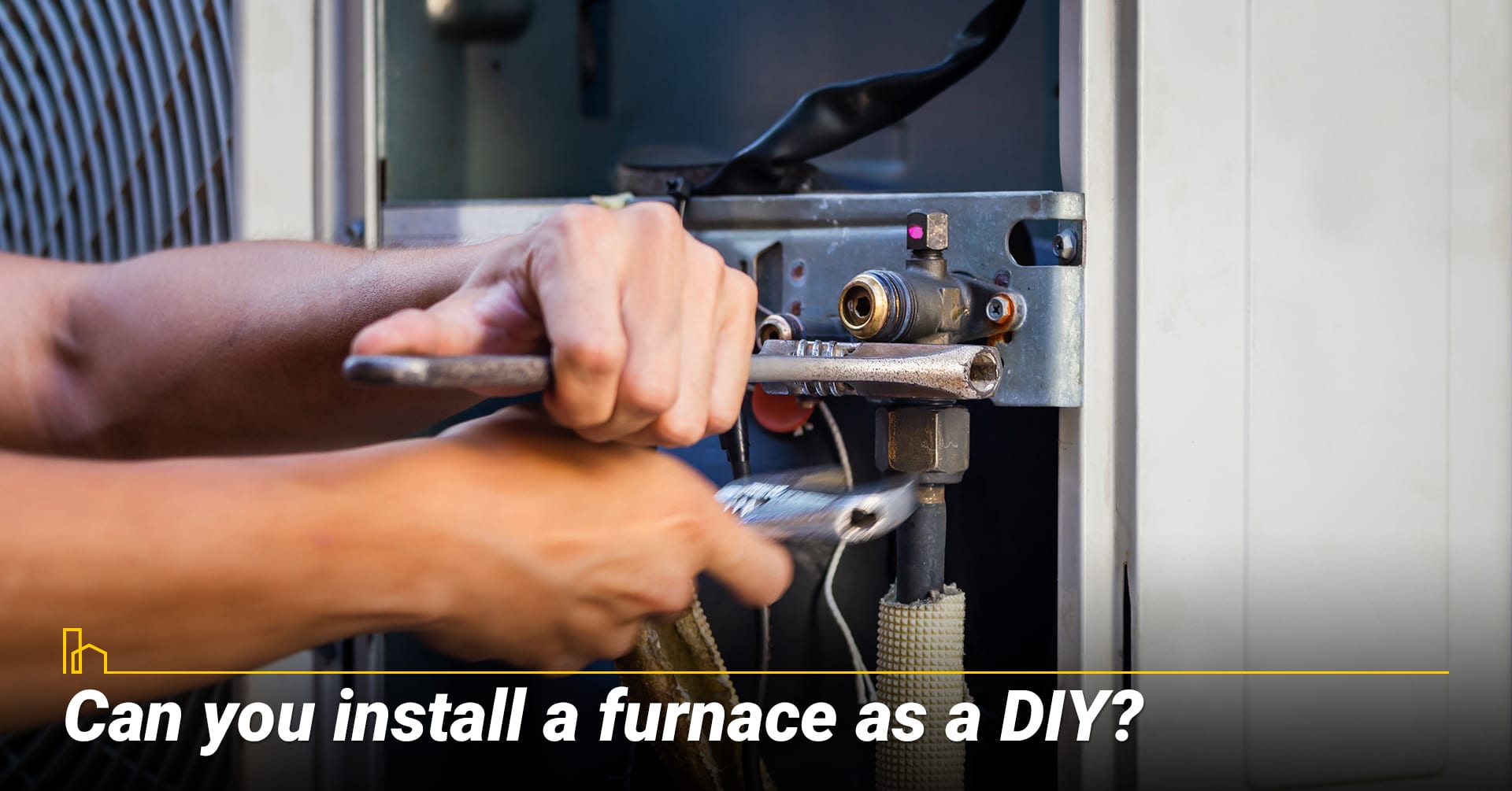
Completing DIY home projects is a great way to save money, customize your home, and get to know the nitty-gritty of your property. However, some home projects aren’t meant to be DIY due to the complexity of the installation and safety measures required.
Installing a furnace as a DIY project is generally not recommended by non-certified people for several reasons:
- A. Technical Expertise: Furnace installation requires specific technical knowledge, including an understanding of electrical systems, gas lines, and ventilation. Mistakes in these areas can be dangerous.
- B. Safety Concerns: this is perhaps the most critical point when restricting a DIY project: a furnace installed improperly can be a serious hazard to life. Incorrect installation can lead to possible safety hazards, including gas leaks, fire risks, and deadly carbon monoxide poisoning.
- C. Building Codes and Permits: Many localities, including San Jose, have specific building codes and require permits for furnace installation. These codes are in place to ensure safety and efficiency. Professionals are familiar with these requirements and can ensure compliance.
- D. Warranty and Insurance: DIY installation can void manufacturer warranties. Home insurance policies may not cover damages caused by improperly installed HVAC systems.
- E. Complexity of Modern Systems: Modern furnaces are complex and often integrated with home HVAC systems. Proper installation ensures they work efficiently and in sync with other home heating and cooling components.
- F. Inspection and Approval: Professional installation usually includes a final inspection by local authorities. This might be more complicated to arrange and pass without professional installation.
For these reasons, you are strongly advised to hire a licensed, experienced HVAC professional for your furnace installation. Working with a professional ensures the job is done safely, efficiently, and in compliance with all local regulations.
How Often Do You Need to Change Your Air Filter?
When was the last time you changed your home’s air filter? If you can’t remember, it’s probably time to do it again. It’s generally an easy maintenance task that doesn’t require any special skills. But first, let’s look at what your air filter does and why you need to change it…
4. How Do You Hire The Best Furnace Installer?
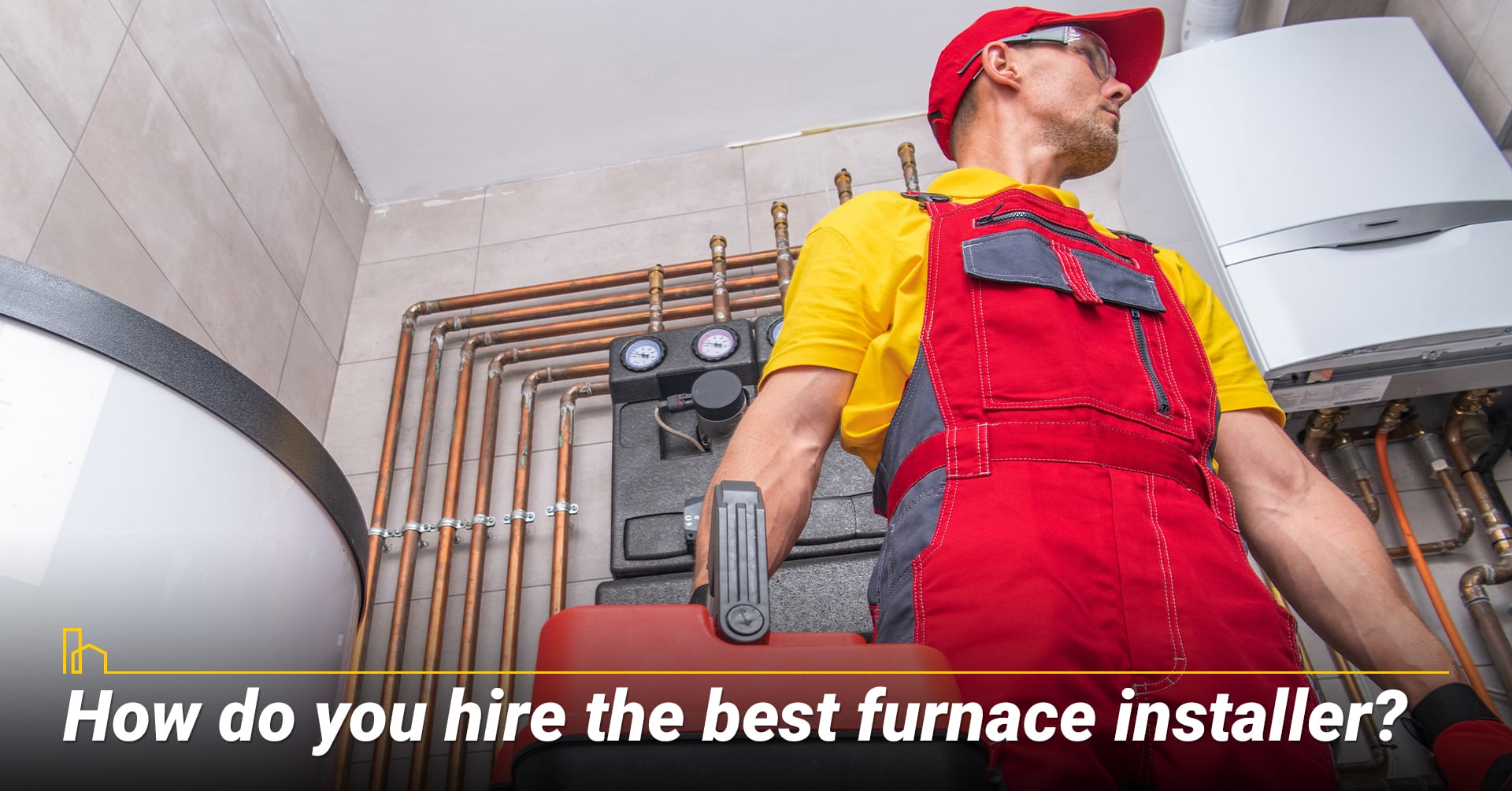
Since a furnace must be installed by a professional, you will likely want to know how to find the best installer in your area. Below are a few essential tips to ensure you hire the best furnace installer at the correct cost who will do a great job.
To hire the best furnace installer, especially in regions like San Jose, California, you will want to consider these key factors:
- A. Check Licensing and Certification: Ensure the installer is licensed in your state and holds any necessary certifications. In California, this would be a C-20 HVAC contractor license. Additionally, certifications from organizations like NATE (North American Technician Excellence) indicate a higher expertise.
- B. Experience: Look for an installer with extensive experience, particularly with the type of furnace you are installing. Experienced installers are more likely to understand the nuances of different systems and local building codes.
- C. References and Reviews: Check online reviews and ask for references. Hearing about other customers’ experiences can give you insight into the installer’s reliability and quality of work.
- D. Get Multiple Quotes: Obtain quotes from several installers to compare prices. However, don’t choose based solely on price; consider the value and quality of service you are getting.
- E. Ask About Their Process: Inquire about their installation process. A good installer should be willing to discuss the steps they will take, the timeline, and how they handle any issues that may arise.
- F. Insurance and Warranties: Ensure the installer has liability and worker’s compensation insurance. Also, ask about warranties and guarantees on their work.
- G. Local Knowledge: An installer familiar with San Jose’s climate and local regulations can be a significant advantage. They can recommend the best furnace types and models for your area’s needs.
- H. Energy Efficiency: Given California’s focus on energy efficiency, look for installers who are knowledgeable about energy-efficient models who can guide you in choosing a system that saves energy and qualifies for any local rebates or incentives.
- I. Professionalism: Gauge their professionalism during your interactions. Timeliness, responsiveness, and willingness to answer your questions thoroughly are good indicators of their service quality.
- J. Post-Installation Services: Check if they offer post-installation services like maintenance and repairs. A company that provides ongoing support can be more reliable.
Remember, a sound furnace installation is not just about the immediate job but also about ensuring the long-term efficiency and safety of your heating system. Take your time to make an informed decision.
How to Choose an HVAC System for Your Home
A reliable HVAC system ensures a comfortable home environment regardless of the weather outside. If you’re building a home or replacing an old system, you’ll find that there are plenty of HVAC options on the market. Here’s a comprehensive guide to making an informed decision…
5. Are There Specific HVAC Installation Recommendations for The San Jose California Area?
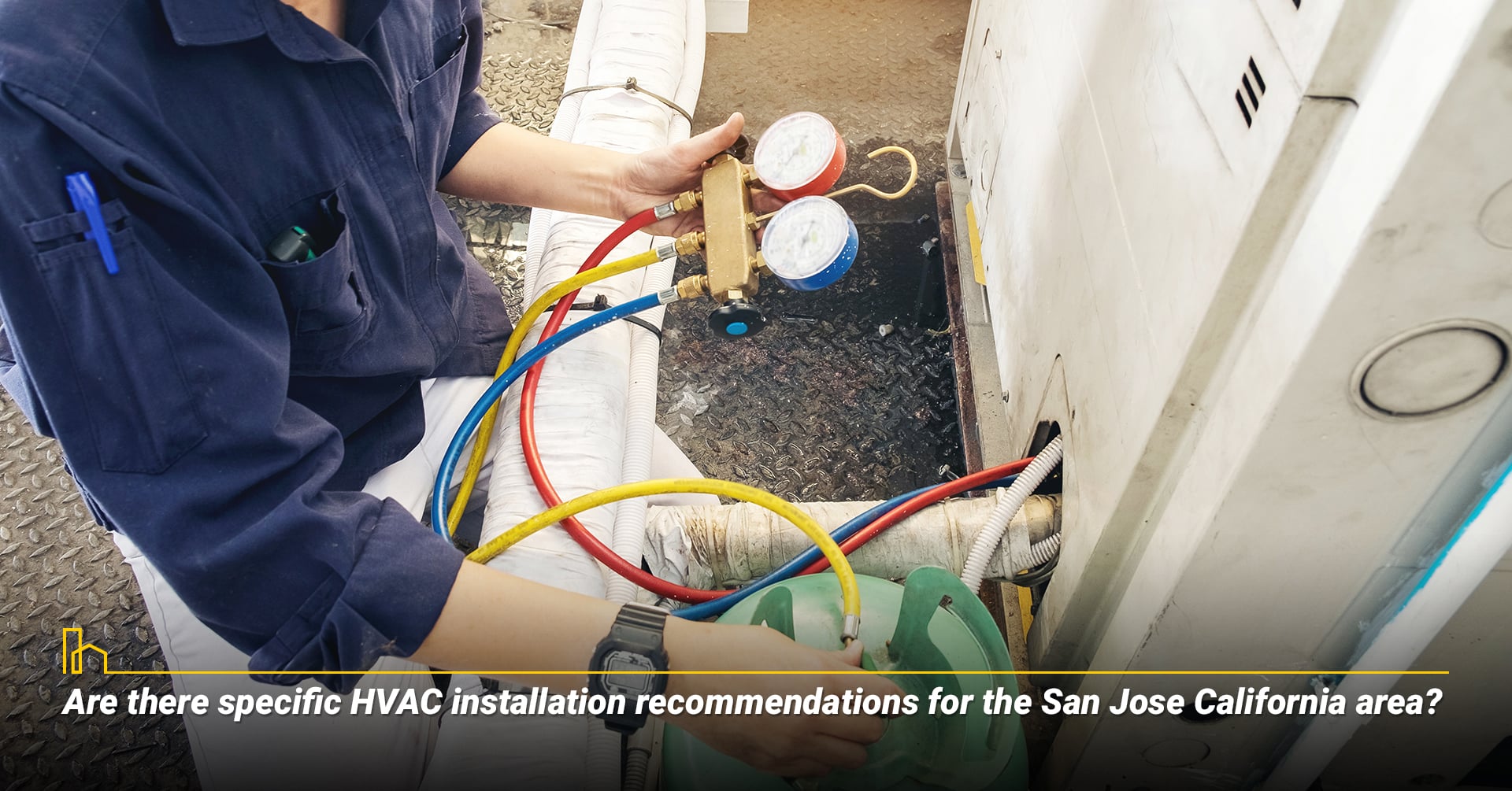
San Jose is a desirable city to live and work in, located on the beautiful California coast. The weather is typically mild, and winters don’t get too cold – – but they’re cold enough to where you’re going to want a well-working furnace installed in your home or business.
For furnace installation San Jose, CA, there are several specific recommendations and considerations that you’ll want to take into account:
- A. Climate Considerations: San Jose has a Mediterranean climate with mild, wet winters and warm, dry summers. HVAC systems should be chosen for efficiency in these conditions. For instance, a furnace with a good AFUE (Annual Fuel Utilization Efficiency) rating is ideal for the cooler months. In comparison, an air conditioning system with a high SEER (Seasonal Energy Efficiency Ratio) rating is beneficial for the warmer months.
- B. Local Building Codes and Regulations: San Jose has specific building codes and regulations for HVAC installations. These include requirements for energy efficiency, safety standards, and environmental regulations. Ensuring that your HVAC system and its installation comply with these codes is crucial.
- C. Permits and Inspections: Depending on the scale of the HVAC installation or upgrade, permits may be required from the City of San Jose. After installation, an inspection by city officials might be inspected to ensure compliance with building codes and safety standards.
- D. Energy Efficiency Incentives: San Jose and California more broadly offer various incentives and rebates for installing energy-efficient HVAC systems. Researching these programs can provide financial benefits and encourage the installation of greener technology.
- E. Ductwork Assessment: Given the age of some buildings in San Jose, it’s important to assess and possibly upgrade the ductwork during HVAC installation. Properly sealed and insulated ducts improve system efficiency and reduce energy costs.
- F. Professional Installation: Hiring a licensed and experienced HVAC contractor is recommended due to the technical and regulatory complexities. They can navigate local codes, obtain necessary permits, and ensure safe and efficient installation.
- G. Regular Maintenance: Once installed, regular maintenance of your HVAC system is key to its longevity and efficiency. Such maintenance includes routine checks, filter changes, and professional inspections.
- H. Consideration for Air Quality: San Jose residents may also consider adding air quality components like air purifiers or humidifiers to their HVAC systems, especially given California’s wildfire seasons, which can affect air quality.
By considering these crucial factors, property owners in San Jose can ensure that their HVAC systems are compliant with local regulations and tailored to provide efficient and effective heating and cooling throughout the year.
9 Affordable Ways to Heat Your Home This Winter
If your heating bill was frightening last year, if you’re building a residence or vacation home, or if your old system is starting to fail, it is time to look at your options when it comes to heating your home. Here we’ll explore some cost-effective ways to keep your space comfortable this winter…
6. How Do You Install a New Furnace?

Installation of a new furnace system has several steps. Here’s a detailed look into the process a professional would take and the estimated time to install.
- A. Choosing the Right Furnace: Homeowners should start by consulting with HVAC professionals. They will consider factors like the size of the home, local climate, and energy efficiency needs.
- B. Selecting the Furnace: Options include gas, electric, and oil furnaces. In San Jose’s mild climate, a high-efficiency gas furnace is often popular due to its cost-effectiveness and performance.
- C. Obtaining Permits: In San Jose, like in many cities, installing a new furnace requires permits from local authorities. Having the necessary permit ensures that the installation complies with building codes and safety standards.The time to obtain permits can vary, but it generally takes a few days to a few weeks.
- D. Preparation and Removal of Old Furnace: Preparation — This includes arranging access to the installation site and ensuring safety measures are in place.
- E. Removal: If there’s an existing furnace, it needs to be carefully dismantled and removed. This process can take a few hours.
- F. Installation of the New Furnace: The new furnace is placed and assembled in the designated area, which can take several hours.
- G. Ductwork and Ventilation: Connecting the furnace to existing ductwork and ensuring proper ventilation is critical. This step might require additional time if modifications are needed.
- H. Electrical and Gas Connections: Safe and compliant connections to the electrical system and gas line are essential. This step is typically quick but crucial.
- I. Testing and Calibration: Once installed, the furnace is thoroughly tested for functionality, efficiency, and safety. Such testing includes calibrating the thermostat and checking for leaks.Calibration is essential to ensure the furnace operates at peak efficiency. This process includes fine-tuning various settings according to the manufacturer’s specifications.
- J. Final Inspection and Approval: After installation, a final inspection by local authorities in San Jose may be required. This step is crucial to ensure the installation meets all regulatory standards.The inspection typically involves checking the installation quality, safety features, and compliance with local codes.
- K. Cleanup and Customer Orientation: Post-installation, technicians will clean up the work area, removing any debris or tools.The homeowner is then given a walkthrough of the new system. The walkthrough includes instructions on operating the thermostat, understanding maintenance needs, and tips for maximizing efficiency.
- L. Duration of the Process: The entire process, from choosing a furnace to final approval, can vary in duration. Typically, the installation itself can be completed in 1-2 days, depending on the job’s complexity.However, when considering the time for obtaining permits, scheduling inspections, and possible ductwork modifications, the entire process could extend from a few days to a few weeks.
Increasing Your Property Value Through HVAC Upgrades
Among the top projects with a high return on investment is hiring heating and cooling companies to determine if your HVAC (heating, ventilation and air conditioning) system needs repair or complete replacement. A brand-new air conditioner or a smoothly functioning furnace will make your home more valuable to any buyer…
Conclusion
Installing a furnace in San Jose, California, requires careful planning, adherence to local codes, and professional execution. While the process may seem lengthy, it ensures a safe, efficient, and long-lasting heating solution for your home. Homeowners are advised to schedule installations during off-peak seasons and to work with reputable, licensed HVAC professionals for the best results.
With the proper installation and maintenance processes, your new furnace will provide comfortable and efficient heating for many years.
9 Affordable Ways to Insulate Your Windows for Winter
Since we value the natural light, ventilation and outdoor views our windows provide, our best option is not to remove them but to make sure they’re insulated as well as possible. Here’re some techniques you can use to make sure your windows aren’t letting out all the heat your furnace supplies…

